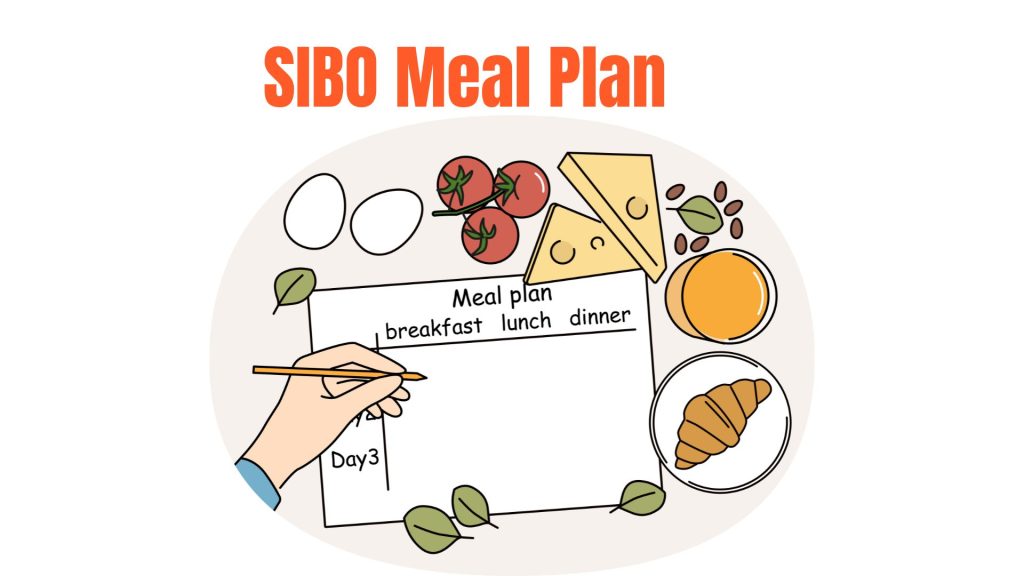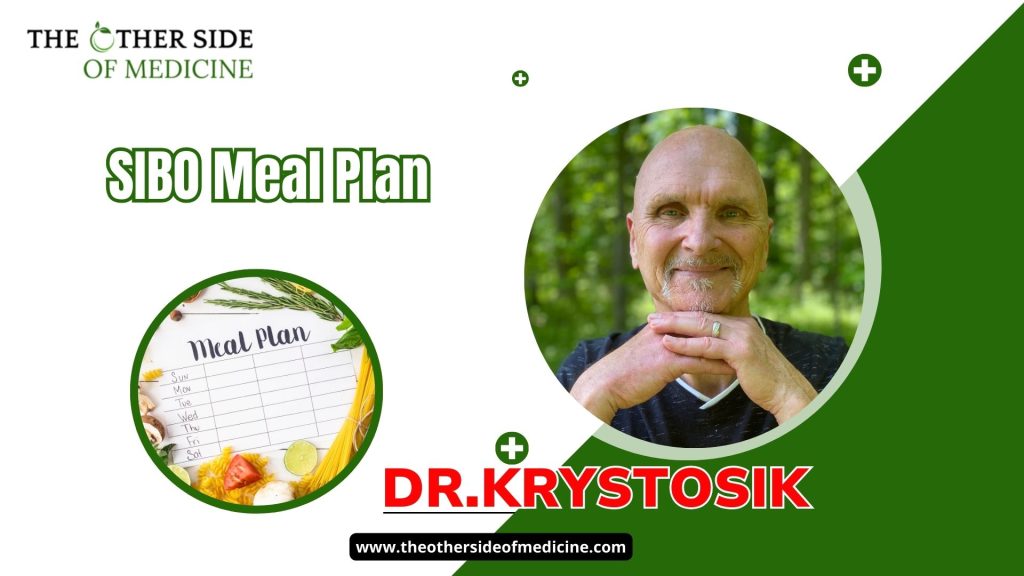If you’ve been diagnosed with Small Intestinal Bacterial Overgrowth (SIBO), chances are you’ve been handed a list of forbidden foods that’s longer than your grocery list. The conventional advice usually sounds something like this: “No FODMAPs, no fermentables, no histamines, no this, no that.”
Before long, food becomes the enemy, and mealtime becomes a joyless ordeal. But what if I told you there’s a better way—a liberating, personalized, and scientifically grounded plan that nourishes and heals the gut without an experience filled with drudgery?
In my 35 years of clinical practice, I’ve helped thousands of people overcome SIBO—without resorting to the overly restrictive diets that dominate the internet and even many functional medicine circles.
The truth is most people don’t get sick because they’re eating sauerkraut or sweet potatoes. They get sick because they’re eating foods their immune system is quietly reacting to—foods they don’t even realize are causing damage.
Let’s unpack my strategy to eliminate SIBO—and why it works without all of the unnecessary dietary restrictions.

Why the Conventional SIBO Diets Often Fail?
Most practitioners lean on a handful of popular dietary approaches to treat SIBO:
- Low FODMAP diet
- Specific Carbohydrate Diet (SCD)
- Low-histamine diet
- Ferment-free protocols
These diets aim to starve the overgrown bacteria in the small intestine by limiting their fuel source. On the surface, this makes sense—but it comes at a steep cost. These regimens often leave patients with limited food choices, mentally drained, and discouraged, not to mention socially isolated. And more importantly, these diets rarely address one of the most important underlying root causes of SIBO, immune dysfunction triggered by hidden food allergies.
That’s where my approach breaks the mold.
A Whole-Food, Plant-Strong Approach
Rather than putting my patients on extreme elimination diets, I guide them toward a whole-food, primarily plant-based plan rich in:
- A wide variety of fresh vegetables (cooked and raw)
- Cold-water fish like wild-caught salmon, tuna, and sardines
- Gluten-free whole grains (quinoa, millet, amaranth)
- A wide variety of fresh fruits, especially berries
- Limited organic poultry (chicken or turkey)
- Nutrient-dense raw nuts and seeds
- Gut-healing herbs and superfoods
This plan isn’t about deprivation—it’s about feeding the body—and your friendly gut bugs—the foods they crave to feel and function their best.”
and the beneficial gut bacteria, the kind of foods needed and loved. And yes, it includes fermented foods, too (more on that shortly).
The Power of Personalization: IgG Food Sensitivity Testing
One of the cornerstones of my SIBO diet is personalization. No two bodies are alike, and that’s especially true when it comes to food sensitivities. Typical allergists test for IgE-mediated reactions—those immediate responses like hives, swelling, or anaphylaxis that occur within 30 minutes of exposure.
But in the vast majority of SIBO cases, the real culprits are delayed IgG food sensitivities—immune responses that manifest anywhere from 3 hours to 5 days after eating the offending food. These silent troublemakers can trigger inflammation throughout the gut and beyond.
Through a simple, scientifically validated blood test, we identify these delayed allergies and eliminate them from the patient’s diet for a 3-month healing window. The results are transformational.
How Food Sensitivities Worsen SIBO?
When someone with SIBO continually eats foods they’re unknowingly sensitive to, the immune system mounts an attack that generates inflammatory compounds like histamine, cytokines, and prostaglandins. These substances damage the gut lining, leading to increased intestinal permeability—what many now know as “leaky gut.”
Once that one-cell-thin lining of the small intestine becomes damaged, large, undigested proteins and bacterial toxins such as lipopolysaccharides (LPS) leak into the bloodstream. This can lead to a laundry list of symptoms—bloating, gas, cramping, brain fog, joint pain, chronic fatigue, and even autoimmune diseases like Hashimoto’s, rheumatoid arthritis, and lupus.
My protocol not only removes these inflammatory foods but also actively works to repair the intestinal lining and support immune system balance.
Healing the Gut: Herbs and Superfoods That Rebuild
During the 3-month elimination phase, I prescribe natural gut-healing agents including:
- Aloe vera gel – soothes inflamed mucosa and promotes tissue regeneration
- Slippery elm bark forms a protective coating over the intestinal lining
- Deglycyrrhizinated licorice (DGL) supports mucosal integrity
- Marshmallow root – reduces inflammation and coats the gut lining
These botanicals work together to heal the leaky gut, calm the immune system, and set the stage for long-lasting healing.
Targeting the Root Cause: Herbal Antimicrobials
Rather than using harsh antibiotics like rifaximin, which can disrupt the delicate balance of gut flora, I prescribe targeted herbal protocols to eliminate the overgrown bacteria without harming the beneficial gut bacteria. These include:
- Berberine
- Oregano oil
- Neem
- Garlic extract (allicin)
- Caprylic acid
These herbs have been clinically shown to reduce harmful bacteria in the small intestine while preserving the beneficial bacteria—essential for long-term recovery.
Reintroducing Fermented Foods (Yes, You Read That Right)
Here’s where my protocol really breaks from the pack: I do not restrict fermented foods during the elimination diet. I introduce them.
Of course, we start slowly—with tiny amounts of sauerkraut juice, coconut yogurt, kombucha, etc.—and increase as tolerated. The reason is simple: fermented foods contain the very microbes that help keep harmful bacteria in check. Rather than avoiding them, we leverage them to restore microbial diversity and resilience.
When the gut lining is healing, and the immune system is no longer being bombarded by hidden allergens, fermented foods are not only safe—they are essential.
A Rotational Reintroduction Phase
After the 3-month elimination period, we reintroduce the previously reactive foods on a 3-day rotation basis. This method prevents the immune system from overreacting again and allows us to determine if any of the foods need to be permanently avoided. Within six months, the formerly reactive foods can be reintroduced into the diet two or three times per week. Occasionally, one or two foods may need to be avoided permanently.
The goal here is not just freedom, but confidence: knowing exactly which foods nourish your body and which ones to avoid.
SIBO Healing Doesn’t Have to Mean Misery

My SIBO diet is not only less restrictive—it’s more effective, enjoyable, and empowering. By identifying hidden food sensitivities, healing the gut lining, and restoring balance with herbs and fermented foods, we allow the body to do what it was designed to do: heal itself.
You don’t need to live in fear of food. You don’t need to count grams of fermentable carbs or avoid kimchi or other fermented foods from your fridge. You need a plan that makes sense, is backed by science, and is tailored to your unique biology.
That’s the kind of care every patient deserves.
So, if you’re ready to trade in a restrictive diet that is boring and limited, I invite you to consider my prescription to heal SIBO. Long-term healing from SIBO isn’t just possible—it’s delicious.
Goodbye illness. Hello wellness.
